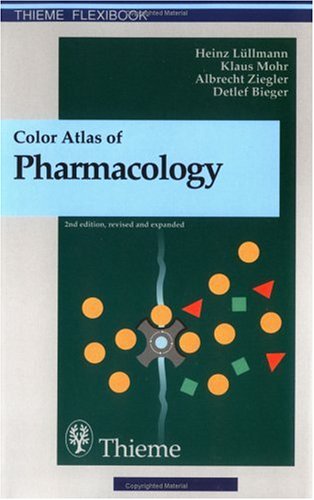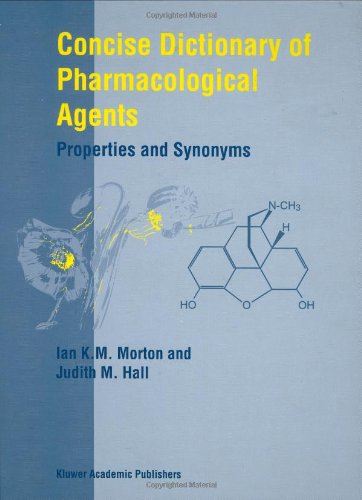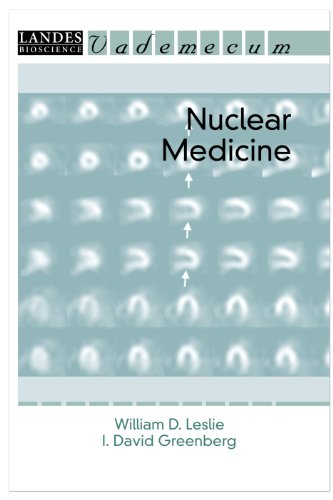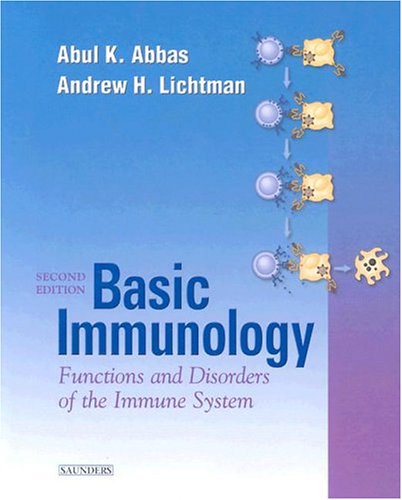Stanley E. Manahan9781566706186, 1-56670-618-1
Table of contents :
TOXICOLOGICAL CHEMISTRY AND BIOCHEMISTRY – THIRD EDITION……Page 2
Preface……Page 4
The Author……Page 6
Table of Contents……Page 7
1.2 ELEMENTS……Page 21
1.2.2 Subatomic Particles……Page 22
1.2.5 Important Elements……Page 23
1.2.6.1 Features of the Periodic Table……Page 24
1.2.8 Metals, Nonmetals, and Metalloids……Page 26
1.3.1 Chemical Compounds……Page 27
1.3.3 Ionic Bonds……Page 28
1.3.5 Molecular Mass……Page 29
1.4 CHEMICAL REACTIONS AND EQUATIONS……Page 30
1.5.1 Solution Concentration……Page 31
1.5.3.1 Acids, Bases, and Neutralization Reactions……Page 32
1.5.3.3 Metal Ions Dissolved in Water……Page 33
1.6 ORGANIC CHEMISTRY……Page 34
1.7.1 Alkanes……Page 35
1.7.1.1 Formulas of Alkanes……Page 36
1.7.1.3 Names of Alkanes and Organic Nomenclature……Page 37
1.7.1.4 Summary of Organic Nomenclature as Applied to Alkanes……Page 38
1.7.1.5 Reactions of Alkanes……Page 39
1.7.2.1 Addition Reactions……Page 40
1.7.5 Aromatic Hydrocarbons……Page 41
1.8 ORGANIC FUNCTIONAL GROUPS AND CLASSES OF ORGANIC COMPOUNDS……Page 43
1.8.1 Organooxygen Compounds……Page 44
1.8.2 Organonitrogen Compounds……Page 45
1.8.3.1 Alkyl Halides……Page 47
1.8.3.4 Halogenated Naphthalene and Biphenyl……Page 48
1.8.3.5 Chlorofluorocarbons, Halons, and Hydrogen-Containing Chlorofluorocarbons……Page 49
1.8.4.1 Thiols and Thioethers……Page 50
1.8.5.1 Alkyl and Aromatic Phosphines……Page 52
1.8.5.3 Phosphorothionate Esters……Page 53
1.10 SYNTHETIC POLYMERS……Page 54
QUESTIONS AND PROBLEMS……Page 56
2.1.1 The Environment……Page 59
2.1.2 Environmental Chemistry……Page 61
2.2 WATER……Page 62
2.3.1 Oxidation–Reduction……Page 64
2.3.4 Water Pollutants……Page 65
2.4.1 Solids in the Geosphere……Page 66
2.5 SOIL……Page 67
2.6.1 Physical and Chemical Aspects of Weathering……Page 69
2.6.2 Soil Chemistry……Page 70
2.7 THE ATMOSPHERE……Page 71
2.8 ATMOSPHERIC CHEMISTRY……Page 72
2.8.1 Gaseous Oxides in the Atmosphere……Page 73
2.8.3 Particulate Matter……Page 74
2.10 THE ANTHROSPHERE AND GREEN CHEMISTRY……Page 75
REFERENCES……Page 76
QUESTIONS AND PROBLEMS……Page 77
3.1.1 Biomolecules……Page 79
3.2.1 Major Cell Features……Page 80
3.3 PROTEINS……Page 81
3.3.1 Protein Structure……Page 84
3.4 CARBOHYDRATES……Page 85
3.5 LIPIDS……Page 86
3.6 ENZYMES……Page 89
3.7 NUCLEIC ACIDS……Page 92
3.7.2 Modified DNA……Page 95
3.9.1 Energy-Yielding Processes……Page 96
QUESTIONS AND PROBLEMS……Page 97
4.1.2 Pathways of Substances and Their Metabolites in the Body……Page 99
4.2 DIGESTION……Page 100
4.2.1 Carbohydrate Digestion……Page 101
4.2.2 Digestion of Fats……Page 102
4.3.1 An Overview of Catabolism……Page 103
4.3.4 Metabolism of Proteins……Page 105
4.4.1 High-Energy Chemical Species……Page 107
4.4.2 Glycolysis……Page 108
4.4.3 Citric Acid Cycle……Page 109
4.4.4 Electron Transfer in the Electron Transfer Chain……Page 110
4.4.6 Overall Reaction for Aerobic Respiration……Page 111
4.5 USING ENERGY TO PUT MOLECULES TOGETHER: ANABOLIC REACTIONS……Page 112
4.6.1 Stereochemistry and Xenobiotics Metabolism……Page 114
QUESTIONS AND PROBLEMS……Page 115
5.1 INTRODUCTION……Page 116
5.2 TOXICANTS……Page 117
5.3 PATHWAYS OF TOXICANTS INTO ECOSYSTEMS……Page 118
5.3.1 Transfers of Toxicants between Environmental Spheres……Page 119
5.3.2 Transfers of Toxicants to Organisms……Page 120
5.4 BIOCONCENTRATION……Page 121
5.5.1 Bioconcentration Factor……Page 122
5.6 BIODEGRADATION……Page 124
5.6.1 Biochemical Aspects of Biodegradation……Page 125
5.6.3 General Factors in Biodegradation……Page 126
5.7 BIOMARKERS……Page 127
5.8 ENDOCRINE DISRUPTERS AND DEVELOPMENTAL TOXICANTS……Page 128
5.10 EFFECTS OF TOXICANTS ON ECOSYSTEMS……Page 129
SUPPLEMENTARY REFERENCES……Page 131
QUESTIONS AND PROBLEMS……Page 132
6.1.2 History of Toxicology……Page 134
6.1.5 Toxicological Chemistry……Page 135
6.3.1 Classification of Factors……Page 136
6.3.2 Form of the Toxic Substance and Its Matrix……Page 137
6.3.4 The Subject……Page 138
6.4 EXPOSURE TO TOXIC SUBSTANCES……Page 139
6.4.2 Barriers to Skin Absorption……Page 140
6.4.2.2 Pulmonary Exposure……Page 141
6.4.6 The Intestinal Tract and the Liver……Page 142
6.5 DOSE–RESPONSE RELATIONSHIPS……Page 143
6.6.1 Nonlethal Effects……Page 144
6.7.1 Hypersensitivity and Hyposensitivity……Page 146
6.8.1 Examples of Endogenous Substances……Page 147
6.10.1 Receptors……Page 148
6.11 PHASES OF TOXICITY……Page 149
6.12 TOXIFICATION AND DETOXIFICATION……Page 150
6.13.1 Vital Signs……Page 151
6.13.3 Odors……Page 153
6.14 REPRODUCTIVE AND DEVELOPMENTAL EFFECTS……Page 154
SUPPLEMENTARY REFERENCES……Page 155
QUESTIONS AND PROBLEMS……Page 156
7.1.1 Chemical Nature of Toxicants……Page 158
7.1.2 Biochemical Transformations……Page 159
7.2 METABOLIC REACTIONS OF XENOBIOTIC COMPOUNDS……Page 160
7.2.1 Phase I and Phase II Reactions……Page 161
7.3.1 Oxidation Reactions……Page 162
7.3.4 Oxidation of Noncarbon Elements……Page 163
7.3.5 Alcohol Dehydrogenation……Page 164
7.3.6 Metabolic Reductions……Page 166
7.3.8 Metabolic Dealkylation……Page 167
7.4 PHASE II REACTIONS OF TOXICANTS……Page 168
7.4.1 Conjugation by Glucuronides……Page 169
7.4.2 Conjugation by Glutathione……Page 171
7.4.3 Conjugation by Sulfate……Page 172
7.4.4 Acetylation……Page 173
7.4.5 Conjugation by Amino Acids……Page 174
7.4.6 Methylation……Page 175
7.5 BIOCHEMICAL MECHANISMS OF TOXICITY……Page 176
7.6 INTERFERENCE WITH ENZYME ACTION……Page 177
7.7 BIOCHEMISTRY OF MUTAGENESIS……Page 178
7.8 BIOCHEMISTRY OF CARCINOGENESIS……Page 180
7.9 IONIZING RADIATION……Page 182
QUESTIONS AND PROBLEMS……Page 183
8.1.1 Chromosomes……Page 185
8.1.3 Toxicological Importance of Nucleic Acids……Page 187
8.2.2 Chromosome Structural Alterations, Aneuploidy, and Polyploidy……Page 188
8.3 TOXICANT DAMAGE TO DNA……Page 189
8.4.1 Tests for Mutagenic Effects……Page 191
8.4.3 Cytogenetic Assays……Page 193
8.5 GENETIC SUSCEPTIBILITIES AND RESISTANCE TO TOXICANTS……Page 194
8.6 TOXICOGENOMICS……Page 195
8.6.1 Genetic Susceptibility to Toxic Effects of Pharmaceuticals……Page 196
QUESTIONS AND PROBLEMS……Page 198
9.1 INTRODUCTION……Page 200
9.2 RESPIRATORY SYSTEM……Page 201
9.3 SKIN……Page 203
9.3.1 Toxic Responses of Skin……Page 204
9.3.3 Damage to Skin Structure and Pigmentation……Page 205
9.4 THE LIVER……Page 206
9.5.1 Blood……Page 209
9.5.2 Hypoxia……Page 211
9.5.4 Cardiotoxicants……Page 212
9.6 IMMUNE SYSTEM……Page 213
9.7 ENDOCRINE SYSTEM……Page 215
9.8 NERVOUS SYSTEM……Page 217
9.9 REPRODUCTIVE SYSTEM……Page 220
9.10 DEVELOPMENTAL TOXICOLOGY AND TERATOLOGY……Page 222
9.11 KIDNEY AND BLADDER……Page 223
REFERENCES……Page 224
QUESTIONS AND PROBLEMS……Page 225
10.2 TOXIC ELEMENTS AND THE PERIODIC TABLE……Page 227
10.4.1 Complex Ions and Chelates……Page 228
10.4.2 Metal Toxicity……Page 229
10.4.3 Lithium……Page 230
10.4.5 Vanadium……Page 231
10.4.7 Cobalt……Page 232
10.4.9 Cadmium……Page 233
10.4.10 Mercury……Page 234
10.4.10.2 Metabolism, Biologic Effects, and Excretion……Page 235
10.4.11.1 Exposure and Absorption of Inorganic Lead Compounds……Page 236
10.4.11.3 Manifestations of Lead Poisoning……Page 237
10.4.12 Defenses Against Heavy Metal Poisoning……Page 238
10.5.1 Sources and Uses……Page 239
10.5.3 Metabolism, Transport, and Toxic Effects of Arsenic……Page 240
10.6.1 Oxygen and Ozone……Page 241
10.6.3 The Halogens……Page 244
10.6.3.3 Bromine……Page 245
10.6.4.2 Radium……Page 246
QUESTIONS AND PROBLEMS……Page 247
11.2.1 Cyanide……Page 251
11.2.1.1 Biochemical Action of Cyanide……Page 252
11.2.3 Biochemical Action of Carbon Monoxide……Page 253
11.3.2 Hydrazine……Page 254
11.3.5 Nitrous Oxide……Page 255
11.5 INTERHALOGEN COMPOUNDS AND HALOGEN OXIDES……Page 256
11.5.2 Halogen Oxides……Page 257
11.6.1 Nitrogen Halides……Page 258
11.7.1 Silica……Page 259
11.7.3 Silanes……Page 260
11.8.2 Phosphorus Pentoxide……Page 261
11.9.1 Hydrogen Sulfide……Page 262
11.9.2 Sulfur Dioxide and Sulfites……Page 263
11.9.4 Carbon Disulfide……Page 264
REFERENCES……Page 265
QUESTIONS AND PROBLEMS……Page 266
12.2 CLASSIFICATION OF ORGANOMETALLIC COMPOUNDS……Page 268
12.2.2 Organic Groups Bonded with Classical Covalent Bonds……Page 269
12.2.3 Organometallic Compounds with Dative Covalent Bonds……Page 271
12.3 MIXED ORGANOMETALLIC COMPOUNDS……Page 272
12.5.1 Lithium Compounds……Page 273
12.5.2 Compounds of Group 1A Metals Other Than Lithium……Page 274
12.6.1 Magnesium……Page 275
12.7.1 Zinc……Page 276
12.7.3 Mercury……Page 278
12.8 ORGANOTIN AND ORGANOGERMANIUM COMPOUNDS……Page 279
12.8.1 Toxicology of Organotin Compounds……Page 280
12.9.1 Toxicology of Organolead Compounds……Page 281
12.10.1 Organoarsenic Compounds from Biological Processes……Page 282
12.10.2 Synthetic Organoarsenic Compounds……Page 283
12.10.3 Toxicities of Organoarsenic Compounds……Page 284
REFERENCES……Page 285
QUESTIONS AND PROBLEMS……Page 286
13.2.1 Alkanes……Page 288
13.2.3 Aromatic Hydrocarbons……Page 290
13.3.1 Methane and Ethane……Page 291
13.3.3 Pentane through Octane……Page 292
13.3.6 Cyclohexane……Page 293
13.4 TOXICOLOGY OF UNSATURATED NONAROMATIC HYDROCARBONS……Page 294
13.4.2 1,3-Butadiene……Page 295
13.4.5 Cyclopentadiene and Dicyclopentadiene……Page 297
13.5.1.1 Acute Toxic Effects of Benzene……Page 298
13.5.1.3 Metabolism of Benzene……Page 299
13.5.2 Toluene, Xylenes, and Ethylbenzene……Page 300
13.5.3 Styrene……Page 301
13.6 NAPHTHALENE……Page 302
13.7 POLYCYCLIC AROMATIC HYDROCARBONS……Page 303
13.7.1 PAH Metabolism……Page 304
QUESTIONS AND PROBLEMS……Page 305
14.2.1 Methanol……Page 308
14.2.2 Ethanol……Page 310
14.2.4 The Higher Alcohols……Page 311
14.3.1 Properties and Uses of Phenols……Page 312
14.4 OXIDES……Page 313
14.5 FORMALDEHYDE……Page 314
14.6 ALDEHYDES AND KETONES……Page 315
14.6.1 Toxicities of Aldehydes and Ketones……Page 316
14.7.1 Toxicology of Carboxylic Acids……Page 317
14.8.1 Examples and Uses of Ethers……Page 318
14.9 ACID ANHYDRIDES……Page 319
14.10 ESTERS……Page 320
REFERENCES……Page 321
QUESTIONS AND PROBLEMS……Page 322
15.2.1 Lower Aliphatic Amines……Page 324
15.2.3 Alkyl Polyamines……Page 325
15.3.1 Aniline……Page 326
15.3.3 Naphthylamines……Page 328
15.5 NITRILES……Page 329
15.6 NITRO COMPOUNDS……Page 330
15.6.2 Dinoseb……Page 331
15.7 NITROSAMINES……Page 332
15.8 ISOCYANATES AND METHYL ISOCYANATE……Page 333
15.9.1 Carbamates……Page 335
15.9.2 Bipyridilium Compounds……Page 336
15.10 ALKALOIDS……Page 337
REFERENCES……Page 338
QUESTIONS AND PROBLEMS……Page 339
16.1.1 Biogenic Organohalides……Page 342
16.2.1 Toxicities of Alkyl Halides……Page 343
16.2.2 Toxic Effects of Carbon Tetrachloride on the Liver……Page 344
16.2.4 Hydrochlorofluorocarbons……Page 345
16.2.5 Halothane……Page 346
16.3.1 Uses of Alkenyl Halides……Page 347
16.3.2 Toxic Effects of Alkenyl Halides……Page 348
16.3.3 Hexachlorocyclopentadiene……Page 350
16.4.1 Properties and Uses of Aryl Halides……Page 351
16.4.2 Toxic Effects of Aryl Halides……Page 352
16.5.1 Toxicities of Organohalide Insecticides……Page 353
16.5.3 Toxaphene……Page 355
16.6 NONINSECTICIDAL ORGANOHALIDE PESTICIDES……Page 356
16.6.3 Alachlor……Page 357
16.6.4 Chlorinated Phenols……Page 358
QUESTIONS AND PROBLEMS……Page 359
17.1.2 Reactions of Organic Sulfur……Page 362
17.2.1 Thiols……Page 364
17.2.3 Sulfides and Disulfides……Page 365
17.2.5 Carbon Disulfide and Carbon Oxysulfide……Page 366
17.3.1 Thiourea Compounds……Page 367
17.3.2 Thiocyanates……Page 368
17.3.4 Cyclic Sulfur and Nitrogen Organic Compounds……Page 369
17.3.6 Phosphine Sulfides……Page 370
17.4 SULFOXIDES AND SULFONES……Page 371
17.5 SULFONIC ACIDS, SALTS, AND ESTERS……Page 372
17.6 ORGANIC ESTERS OF SULFURIC ACID……Page 373
17.7.2 Sulfur in Pesticides……Page 374
QUESTIONS AND PROBLEMS……Page 375
18.2 ALKYL AND ARYL PHOSPHINES……Page 378
18.4 PHOSPHONIC AND PHOSPHOROUS ACID ESTERS……Page 380
18.5.1 Orthophosphates and Polyphosphates……Page 381
18.5.2 Orthophosphate Esters……Page 382
18.6 PHOSPHOROTHIONATE AND PHOSPHORODITHIOATE ESTERS……Page 383
18.7.2 Phosphate Ester Insecticides……Page 384
18.7.3 Phosphorothionate Insecticides……Page 386
18.7.4 Phosphorodithioate Insecticides……Page 387
18.7.5.1 Inhibition of Acetylcholinesterase……Page 389
18.7.5.3 Mammalian Toxicities……Page 390
18.7.5.4 Deactivation of Organophosphates……Page 391
18.8 ORGANOPHOSPHORUS MILITARY POISONS……Page 392
REFERENCES……Page 393
QUESTIONS AND PROBLEMS……Page 394
19.1 INTRODUCTION……Page 397
19.2.1 In Vivo Bacterial Toxins……Page 398
19.3 MYCOTOXINS……Page 399
19.3.2 Other Mycotoxins……Page 400
19.4 TOXINS FROM PROTOZOA……Page 401
19.5 TOXIC SUBSTANCES FROM PLANTS……Page 402
19.5.1 Nerve Toxins from Plants……Page 403
19.5.2 Internal Organ Plant Toxins……Page 404
19.5.3 Eye and Skin Irritants……Page 405
19.5.5 Mineral Accumulators……Page 406
19.6.1 Bee Venom……Page 407
19.7.2 Widow Spiders……Page 408
19.8.2 Toxic Effects of Snake Venom……Page 409
19.9 NONREPTILE ANIMAL TOXINS……Page 410
REFERENCES……Page 411
QUESTIONS AND PROBLEMS……Page 412
20.2 INDICATORS OF EXPOSURE TO XENOBIOTICS……Page 414
20.3.1 Direct Analysis of Metals……Page 415
20.4 DETERMINATION OF NONMETALS AND INORGANIC COMPOUNDS……Page 416
20.6.1 Phase I Reaction Products……Page 417
20.6.2 Phase II Reaction Products……Page 419
20.7 DETERMINATION OF ADDUCTS……Page 420
20.8 THE PROMISE OF IMMUNOLOGICAL METHODS……Page 421
SUPPLEMENTARY REFERENCES……Page 422
QUESTIONS AND PROBLEMS……Page 423







Reviews
There are no reviews yet.